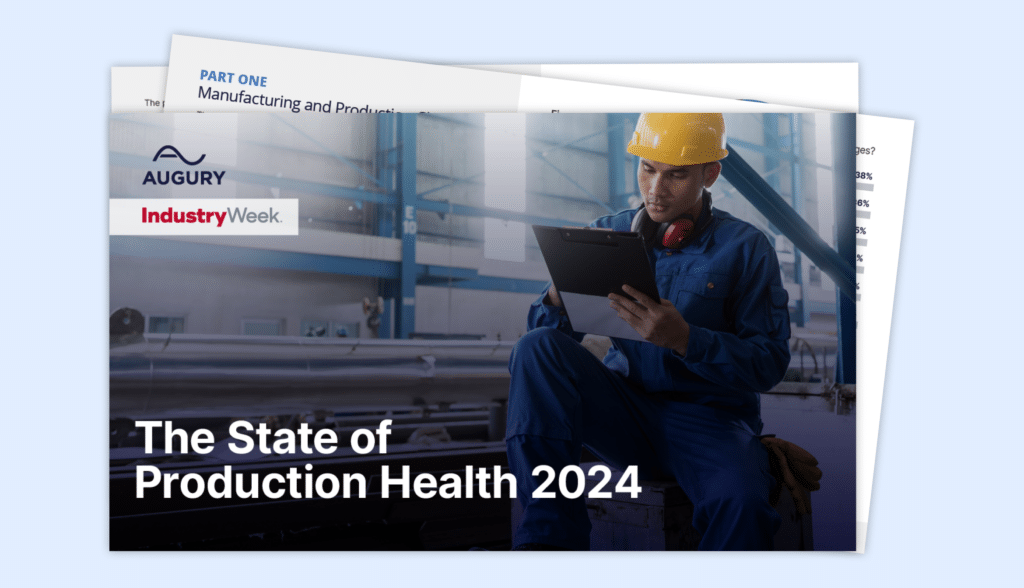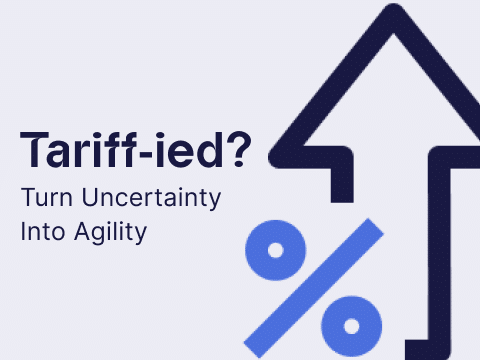
It’s no secret that downtime is manufacturing’s biggest nemesis. From the C-suite to the supply chain to the plant floor, everyone is working hard to keep lines up and running.
Yet out in cyberspace, a Thanos-like threat lurks, ready to “snap” production if certain demands are unmet. These snaps can come in many forms, including ransomware, backdoors, and spear phishing. According to IBM’s X-Force Threat Intelligence Index, manufacturing was the most attacked industry in 2023.
The risks to manufacturing are significant. In addition to losing money from downtime and extortion, businesses risk losing face and becoming the latest media headline (see Toyota’s nightmare.) Worst of all, hacking into an Industrial Control System (ICS) can put workers in harm’s way by physically damaging the machinery or processes that people must then go in and fix.
So, when you’re considering rolling out AI-driven machine health, what cybersecurity measures should you consider?
1. To integrate, or not integrate? That is the question.
Most machine health vendors integrate their solutions with existing customer data sources in order to provide value. The complex IT architecture requirements of integrating into an ICS can take a significant amount of time to work through. And as we all know, time is money.
However, not all machine health solutions require this integration. Some solutions are secure by design and operate outside of a manufacturer’s ICS. Using isolated architecture, components within the software are encapsulated, operating independently of each other. Benefits of this approach include reliability and scalability – important factors when you’re deploying machine health across hundreds of machines and need to see quick ROI.
2: Adherence to rigorous standards
Commonly known as the ISO, the International Organization for Standardization is comprised of experts across the globe who have set the standards for keeping sensitive information secure.
There is a laundry list of benefits that come with ISO 27001 and ISO 9001 compliance. In a nutshell, when a solution adheres to these standards, customers can be confident in their vendor’s:
- Risk management
- Resilience to cyber attack/ preparation for new threats
- Consistency/reliability in processes and outputs
- Operational excellence
- Constant improvement of quality, efficiency, and effectiveness
Similarly, data and privacy regulations have been enacted in various geographies, most notably the European Union’s GDPR and the State of California’s CCPA. Vendors who adhere to these regulations demonstrate strict data handling practices designed to protect their customers’ personal privacy.
3. Encryption
Encryption is a fundamental best practice – it protects sensitive data from unauthorized parties. In addition to meeting the ISO standards listed above, encryption:
- reduces the risk of data breaches during data migration
- makes it easier to detect attempted breaches by recognizing unauthorized modifications or tampering
The best security in the world is built on a foundation of basic security. Make sure your machine health vendor is encrypting data during transfer/transmission and at REST in storage devices.
4. Multi-tenant platform with data segregation per data classification
Machine health solutions serving multiple customers must maintain the security and privacy of each customer’s data. A multi-tenant platform ensures a customer’s data is stored and processed in its own isolated space. Data segregation ensures each customer’s data remains separate from and inaccessible to other customers served on the platform. Further segregation happens according to how the data is classified and may include storing certain classes of data in separate, encrypted databases with even tighter access controls.
The result? Sensitive customer data is processed and stored in the cloud, protected due to its isolation and classification level, providing even more security against cyber threats.
5. Penetration testing
Simulations are a safe way to test out different scenarios. Proactive vendors conduct penetration testing, which simulates a real-world attack on their systems. Through this exercise, potential weaknesses are uncovered as the fictional attacker tries to exploit the system.
The results of penetration testing are used to highlight vulnerabilities, assess the impact of a potential breach, and prioritize fixes to protect against a true security threat.
Cybersecurity – An Ongoing Practice
Managing cyber risk is never a one-and-done task. Once you settle on a machine health vendor, both you and the vendor must be eternally vigilant in protecting your data and systems. Unfortunately, no matter how brilliant new technology is, there will always be bad actors looking to exploit it for their own gain. That’s no reason to fear AI-powered solutions for the plant floor, but it is a reminder to develop the discipline and ask the questions that will keep you one step ahead of cybercrime.
Want to learn more? Just reach out and contact us!




